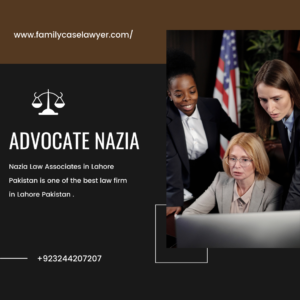
For older workers, having a less-than-perfect vision is a regular challenge. Presbyopia, glaucoma, and cataracts are the most frequent vision-related issues affecting older employees. Presbyopia affects about 80% of persons between the ages of 45 to 55. For older employees, presbyopia—or age-related farsightedness—presents particular vision issues. Additionally, 16% of those with presbyopia lack appropriate correction.
Glaucoma and cataracts, even if less common than presbyopia, also pose difficulties for older employees. Over 80 million people worldwide over the age of 40 suffer from glaucoma, which is one of the main causes of irreversible blindness. More than half of the world has cataracts by the age of 80, and the likelihood of them increasing with age. Other vision-related issues that affect older employees more frequently, though not solely, include damp eyes, macular aging and degeneration (AMD), Time-related arthritis, Flashers and floats, wet or tearing eyes, and low-vision.
Many of these age-related eye problems frequently require care beyond the scope of an organization’s eye safety plan. For instance, cataracts can be surgically removed. Others, such as glaucoma and AMD, do not have a cure but, if discovered early, can be slowed and the vision preserved. When the underlying reason is addressed by changing the workplace settings that contribute to these issues or just by using eye drops, conditions like dry eye and tearing/watery eyes may be treated. Finally, there are several accommodations available for presbyopia, the most frequent age-related vision problem, with a particular emphasis on job safety.
Safety Eyewear Recommendations
Finding the proper eyeglasses is typically the greatest option for older workers who struggle with their inability to see up close. While inexpensive and widely accessible, reading glasses may not always be the ideal choice for the office. The ideal strategy is to look for solutions that suit the worker and the circumstance. The following categories typically contain the most likely answers.
Safety glasses with magnifiers (bifocals) built right into the lens are known as bifocal safety glasses, commonly referred to as safety reading glasses or safety glasses with readers
. They are ideal for people who need impact protection in addition to reading glasses. You no longer need to switch between safety glasses and non-protective reading glasses when you have bifocal safety glasses.
Bifocal safety glasses are available in a wide range of strengths (i.e., diopters), lens tints, and coating choices. All high-quality safety reading glasses are certified to ANSI Z87.1-2015 and offer complete UVA and UVB protection. There are also dual readers and full-lens magnifying glasses available. Stick-on bifocals are a related solution that lets you convert any pair of eyewear to reading glasses. They are applied with water, and once fully dried, they remain in place. Additionally, you can transfer them from one set of eyewear to another. If you already like your safety glasses and want to use them as safety glasses for readers, this is an affordable alternative.
3M/Pentax Bifocal Safety Glasses
3m/Pentax bifocal safety frames are designed primarily for industrial workplaces and the risks that can arise there. Our products are made with the wearer’s comfort, style, and functionality in mind. An effective safety prescription eyewear program involves many different factors, but none of them matter if an employee is not WEARING their safety eyewear. Because of this, maintaining employee safety every day depends on comfort, functionality, and style. From attractive sports eyewear to chic and well-fitting eyewear designs in a variety of materials, shapes, and sizes, the PENTAX bifocal safety prescription frame collection offers a wide selection of styles. In order to increase comfort, our frames have a range of fitting features, such as soft adjustable nose pads, comfort nose bridges, spring-hinge flex temples, and adjustable-length temples.
Bifocal Safety Glasses: Advantages
Benjamin Franklin allegedly created bifocal safety glasses in 1784. Since then, they have significantly changed, and you can now even obtain bifocal safety glasses to make sure your eyes are protected while your vision is maintained. Knowing which qualities to look for will help you choose the best bifocal safety glasses. Take into account our ranking of the top eight qualities to seek in a pair of safety glasses. Of course, the main advantage of any pair of bifocal glasses is that they improve your eyesight. Bifocal safety glasses are the greatest product on the market if you require both safety glasses with reading and protective eyewear.
Take advantage of the best of both worlds and make sure you can see clearly while protecting your eyes from dangers. The comfort bifocal safety glasses provide their wearers is yet another fantastic advantage. You can mix the two and wear your glasses all the time, saving you from having to constantly switch between your reading and safety glasses. Changing glasses is not only inconvenient, but it can also be dangerous for your eyes because they are temporarily exposed. Your daily productivity will be increased by not having to change glasses. You can concentrate better on the task at hand when you aren’t juggling two pairs of glasses. Your requirement for vision help doesn’t ever affect how productive you are.
Safety Security and Cost Effectiveness of 3M/Pentax Bifocal Safety Glasses
Most people don’t consider the cost of buying two different pairs of glasses, but buying safety glasses plus prescription bifocals can actually cost up to twice as much as buying a pair of bifocal safety glasses. When you only need one pair of glasses, why would you get two? 3M Pentax bifocal safety glasses give you the most affordable deals for your comfort. You’ll be happy to know that 3M Pentax bifocal safety glasses come in a wide range of shapes, sizes, and designs and are accessible to both men and women. When you find the correct pair, style and safety don’t have to be mutually exclusive.
Most bifocal safety glasses on the market have been certified to meet or surpass ANSI Z87 + criteria. This indicates that they have been put through rigorous testing to withstand high impact and shield the eyes from all common dangers. For those who use them and work outside, many lenses also provide UV protection.

